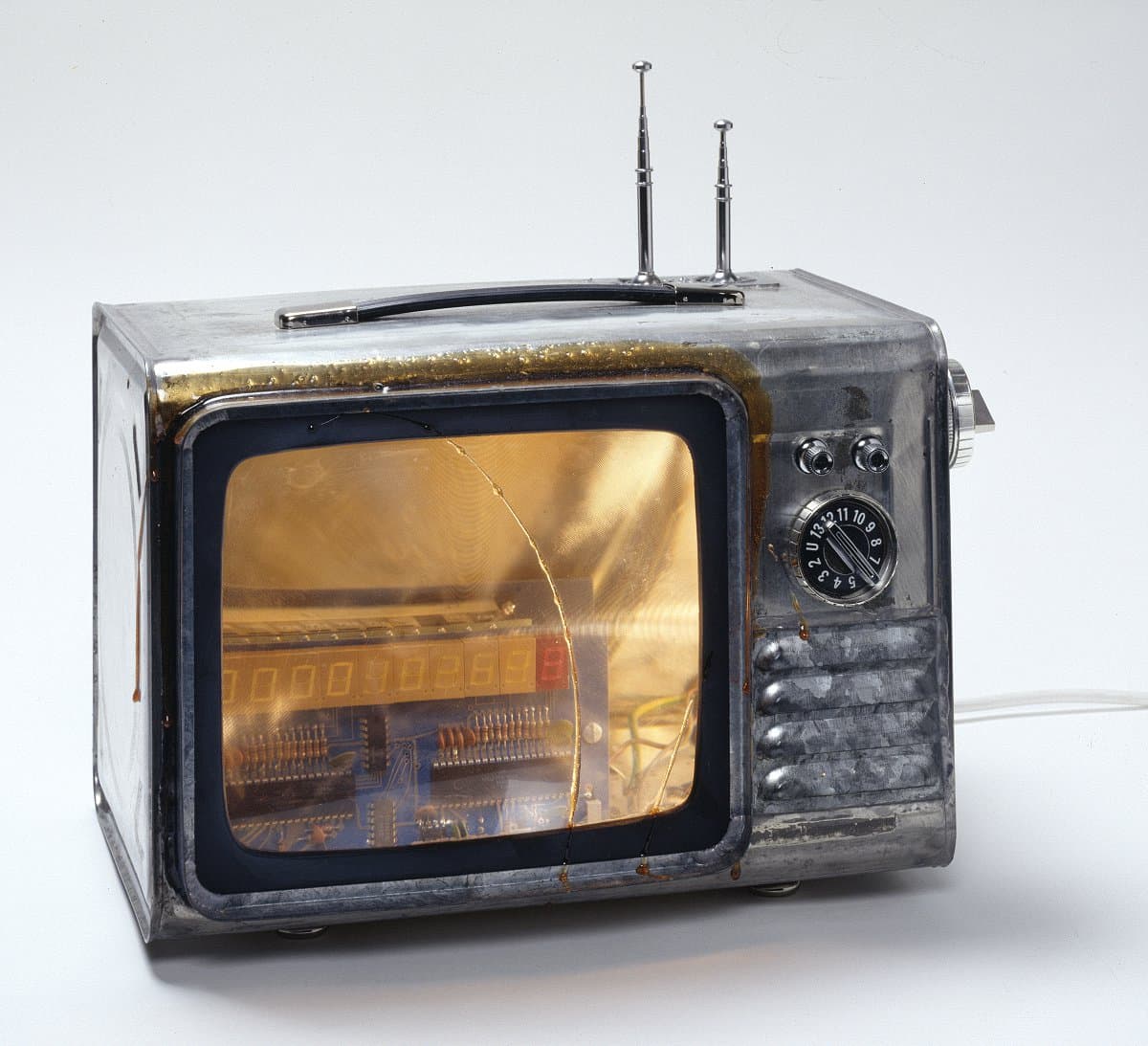

Edward Kienholz
Learn moreThe billionaire deluxe 1977
© Nancy Reddin Kienholz Purchased 1978
More detail | PermalinkAfter an early itinerant lifestyle, Edward Kienholz became a somewhat notorious figure within the West Coast art scene of the 1960s, particularly following the public outrage surrounding his now-classic sculpture Back seat Dodge ’38 1964[1], which the Los Angeles County Board of Supervisors tried to ban from exhibition at the Los Angeles County Museum of Art in 1966. Kienholz’s early work, and that undertaken in collaboration with his wife Nancy Reddin Kienholz from 1972 onwards, consists of assemblages of ‘found’ objects, transformed into art objects, installations and environmental ‘rooms’ or tableaux. These offer an incisive critique of American society, notably The portable War Memorial 1968[2], with its vivid antiwar sentiment realised at the height of the American involvement in Vietnam through a large tableau depicting flag-raising soldiers, a hotdog stand and a memorial plaque among other things both poignant and absurd.
During the late 1970s and 80s and beginning with the trio of works, The billionaire deluxe, The opti-can royale and The econo-can (all 1977), Kienholz produced a number of multiples and ‘unique’ sculptures published by Gemini GEL in Los Angeles. Their domestic scale establishes parallels between the art object and its commercial source, the television set, one of the twentieth century’s ubiquitous inventions. It is a subject that consistently appears in Kienholz’s oeuvre as an element within his tableaux, as for example the central focus of the living room in The eleventh hour final 1968, or as a single art object, with early examples being Instant on 1964 and Cement TV 1969.[3] As Robert Hughes so eloquently observed, ‘To Kienholz, the TV set was both America’s anus and its oracle’,[4] spouting shit and salvation.
Although The billionaire deluxe, The opti-can royale and The econo-can form a modest representation of Kienholz’s art, they do characterise the social and political comment that pervades the artist’s work. There is a metamorphosis of ‘found’ materials into the final object, yet Kienholz does not disguise their origins. The tin can was, presumably, initially used to store engine oil, perhaps then recycled to carry spare fuel, which alludes to the energy and industrial foundations driving the might of the US economy―the reason for many international conflicts. As a group of objects they also present a comment on American society, a class system built on economic wealth, from the deluxe model, an electronic second counter ‘timing’ the increasing proportion of wealth held by the privileged minority, down to The econo-can, its blank screen a metaphor for not being ‘plugged-in’ to postwar economic prosperity and the elusive American dream, as seen on TV.
Steven Tonkin
[1] Los Angeles County Museum of Art.
[2] Museum Ludwig, Cologne.
[3] The eleventh hour final 1968, private collection; Instant on 1964, Betty and Monte Factor Family Collection; Cement TV 1969, Collection of Nancy Reddin Kienholz.
[4] Robert Hughes, American visions: The epic history of art in America, Harvill Press, London, 1997, p 607.

